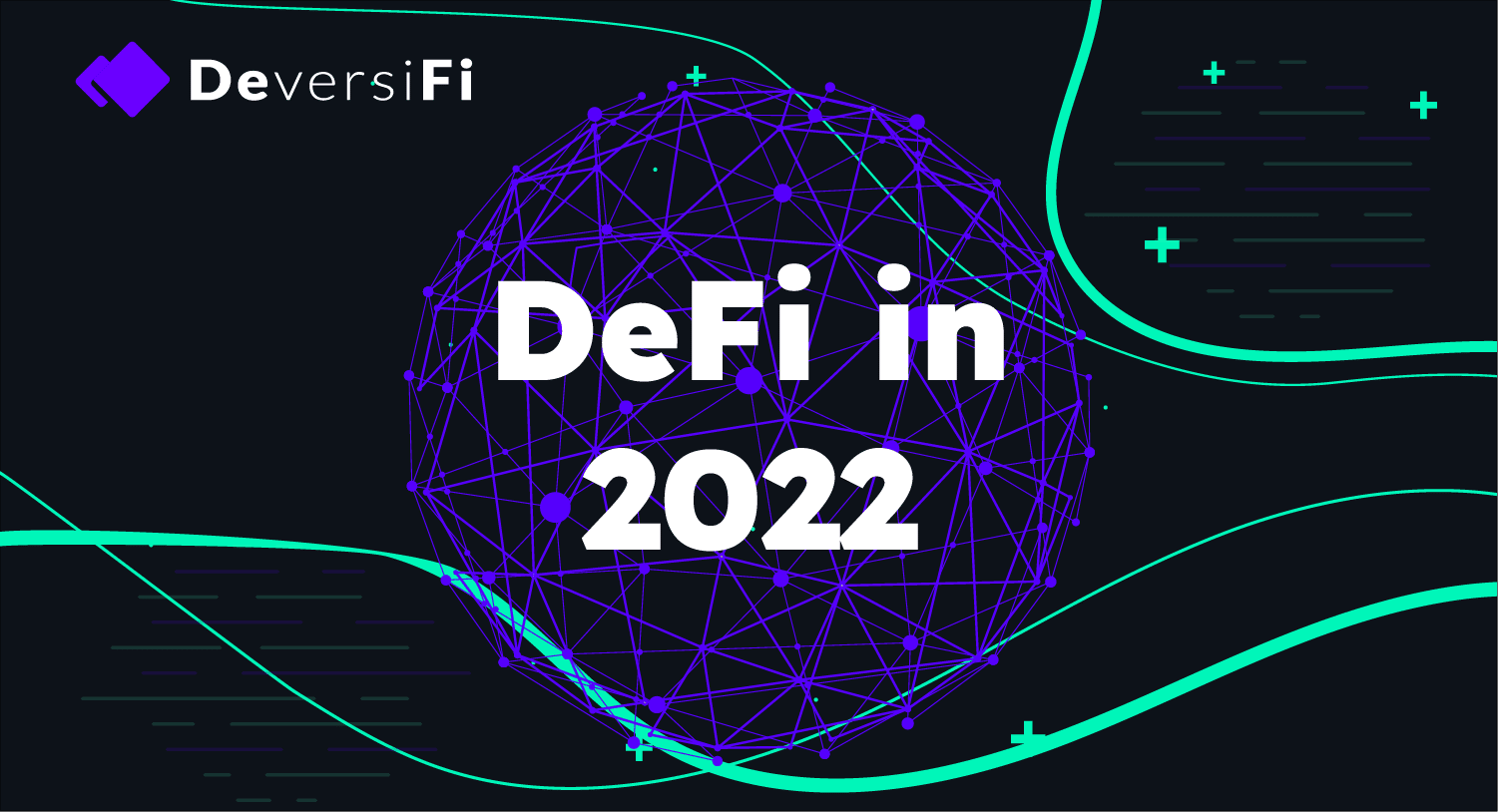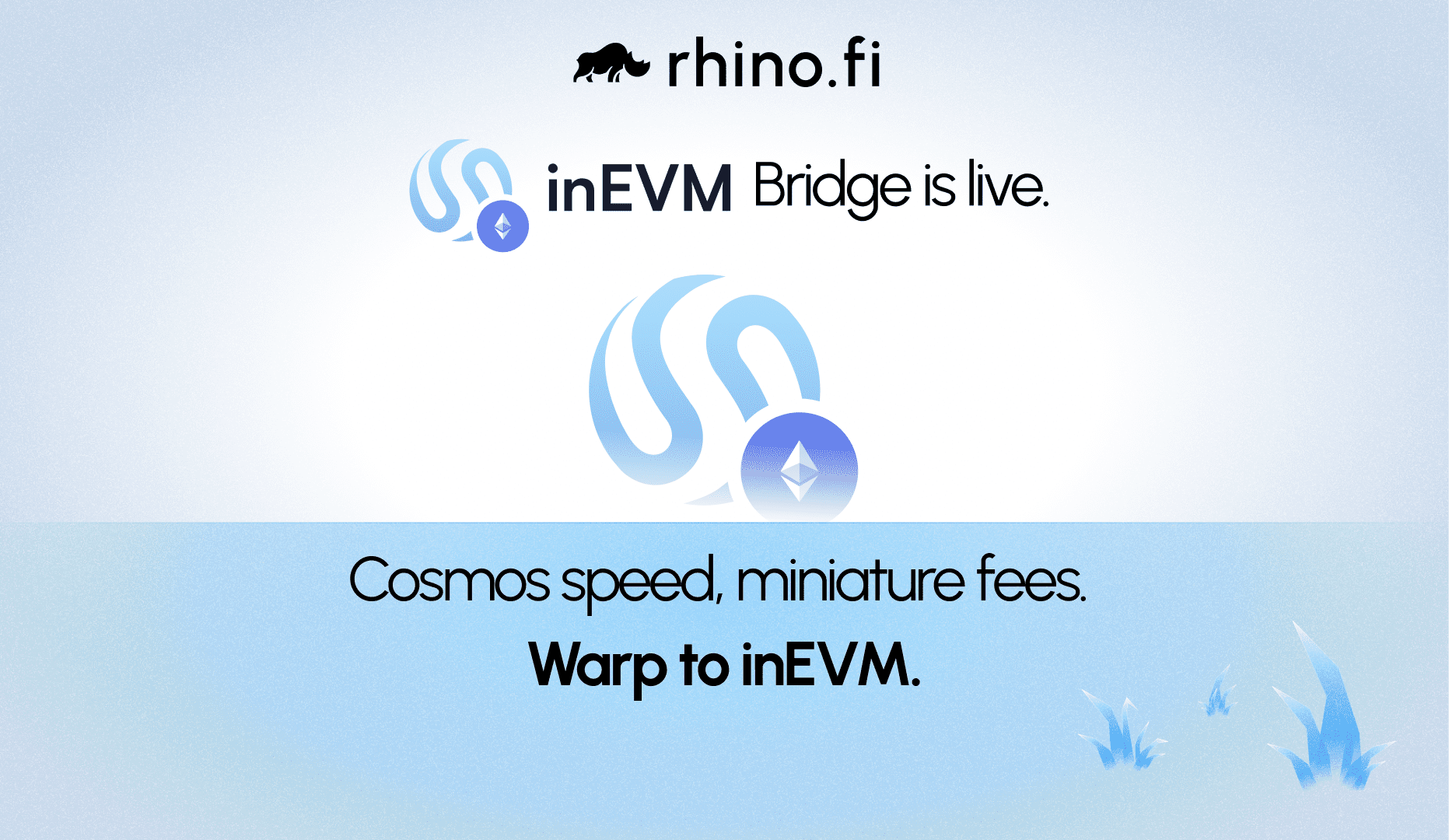DeversiFi Founder Will Harborne looks at the exciting innovations witnessed in the crypto world over the last 12 months and makes his predictions for what 2022 has in store. It’s great news for DeFi fans…
2022 will be the avalanche year for Ethereum, the year that it takes back the centre-ground of crypto DeFi ecosystems. In fact, we predict there will be significantly more people using Ethereum layer 2 than layer 1.
In parallel, we will see the continued growth and interconnectedness of multi-chain ecosystems. This will open up two clear possibilities:
- Users will be able to move assets ever more seamlessly between several connected blockchains.
- Decentralised apps and protocols will be able to launch on various networks.
We have already seen major expansion in this area in 2021, led by projects like Avalanche and Polygon. In 2022, this will become the norm rather than the exception.
As they grow, the concepts of Ethereum layer 2, DeFi and multi-chain will feed one another. As layer 2 rollups evolve, they’ll help connect blockchains together.
This is great news for DeFi. And it’s particularly great news for DeversiFi.
We’re ahead of the curve in using and adopting layer 2, and this leadership gives us the opportunity to be a hub for all layer 2 DeFi.
As DeFi ecosystems grow across multiple layer 2s and chains, the biggest challenge for DeFi users will be the fragmentation that results.
Which of the 5 different chains I used last week did I leave my assets on?
If I want to use this app, which two bridges do I first need to jump through?
Why is this transaction not working?
DeversiFi can play a key part in answering these questions. We can expand from a single rollup solution to a multi-layer 2 solution, bridging to the new multi-chain ecosystems and offering all the best tools and opportunities from across the other layer 2 projects.
Most importantly, we can provide a seamless and consistent experience for users, helping track and manage activity across all of these ecosystems.
Why layer 2 is taking over
At the beginning of 2021, Ethereum was a clear leader among layer 1 blockchains, and this growth was being driven by decentralised applications, or dApps.
Ethereum had chosen to prioritise decentralisation, rather than security and data availability (a point co-founder Joe Lubin made in a recent interview with Bloomberg) and in 2020 the number of dApps on Ethereum had increased by over 2,000%.
However, it was clear early on in the year that scaling was taking longer than expected. The transition from the proof-of-work consensus mechanism to the more energy-efficient proof-of-stake – part of the much-publicised Ethereum 2.0 – has taken time to materialise, and as a result other priorities such as sharding have slipped.
These scalability issues mean that the Ethereum mainnet remains seriously congested, and users have to pay high gas fees. Even Vitalik Buterin, another of Ethereum’s founding team, admitted his frustrations earlier this year.
However, as Vitalik noted during the same interview, layer 2 provides a solution, and will be at the core of Ethereum’s answer to its scaling challenges.
Layer 2 offers thousands of times more capacity and much lower cost than Ethereum currently provides, as well as a better user experience. Because users don’t have to pass through the congested layer 1, they don’t face the exorbitant gas fees when trading or using dApps.
These advantages will translate into major bandwidth expansion this coming year. In fact by the end of 2022 we predict there’ll be a higher total value locked in Ethereum layer 2 DeFi than layer 1, as well as higher trading volumes.
And, for the first time, we’ll also have lots of apps and new projects that launch natively only on layer 2 rather than on Ethereum layer 1 or other sidechains, because it will become the dominant way of using Ethereum.
Ethereum layer 1 will gain almost no new users. It will be used by bots, and as a liquidity store for big pools like Uniswap and Aave. But almost all end user interactions will take place solely on Ethereum layer 2 by the end of the coming year.
Multi-chain is taking shape
In parallel with the rise of layer 2, the scaling challenges facing the main Ethereum blockchain have allowed a series of rival layer 1 chains and side-chains to enter the market.
Crucially, these chains are starting to create their own ecosystems. New bridges have emerged, new projects have launched, and we’re seeing the multi-chain future taking shape.
In the next 12 months, this trend will continue. We’ll see an ecosystem of multiple blockchains, all working together.
There are loads of interesting projects in this space, but we’re particularly interested in the development of Cosmos and Polkadot. They are specifically designed to be multi-chain and so provide a snapshot of what might come next.
Cosmos has a central hub and then many other application-specific blockchains that connect to the hub via the Inter-Blockchain Communication Protocol (IBC). This allows assets to be moved seamlessly between the blockchains, so you can trade assets from one chain to another, or transfer a token from a trading platform and use it for a different purpose, like liquid staking.
Similarly, Polkadot has a central hub and then specific parachains on top. Each of these parachains has different properties, optimised for a particular purpose. For example, some might be optimised for private transactions and others for a decentralised finance network.
As 2022 unfolds, we’ll see more new chains, and the ecosystem of interconnected blockchains will take shape. Users will be able to access several different services from the same wallet and use their coins and tokens more effectively, moving them seamlessly from one platform to the next.
Why this helps DeFi
DeFi experienced huge growth at the beginning of 2021, but took something of a backseat during the second half of the year as attention shifted to other trends in the space, notably NFTs and the metaverse which is broadening the industry from crypto to Web3.
However, we feel this is actually a positive. DeFi protocols take years to develop; the spate of new projects and ideas in 2020 and early 2021, which seemed to appear overnight, were actually the result of three years of building during the bear market, which finally bore fruit.
Now the next wave of innovation is in progress, behind the scenes.
In fact, we feel the emergence of multi-chain ecosystems will provide a fresh surge of stimulus for DeFi, and for layer 2.
As more things happen in blockchain, it’s clear that we’re going to need more than one chain. It will no longer be a case of ‘winner takes all’. In the new multi-chain world there will be various different blockchains, which means more use cases and layer 2 roll-ups connected by bridges.
Over the next few months, we feel that most of the core of DeFi, which requires high-grade security, will focus on Ethereum. Other areas of crypto that don’t require as much security (like Axie Infinity, the virally popular play-to-earn game) will focus on other chains.
At the same time, rollups will continue to evolve. Some will be optimised for private transfers, others for derivatives trading, and others still for NFTs. As these rollups evolve, they’ll help connect blockchains with one another.
Where DeversiFi is headed
DeversiFi will undergo its own evolution in 2022. We are already optimised for decentralised finance, enabling users to interact with order-books and automated market makers (AMMs), make transfers and trade.
However we want to go even further than that.
We have been a leader in using and adopting layer 2, and this leadership gives us the opportunity to be a hub for all layer 2 DeFi. That means multiple layer 2 solutions, with seamless inbuilt bridging.
We’re already starting to build on Starknet, which is going to be the permissionless rollup version of the Starkware technology for scaling. But we’re also exploring building on other layer 2s, including EVM-compatible ones like zkSync and several others.
This will, in turn, enable us to work with interesting ecosystems beyond Ethereum, like Avalanche, Solana, Cosmos and Polkadot. These ecosystems can be directly connected by bridging to layer 2s like DeversiFi, so the process is completely seamless.
For users, this will produce a much more interconnected world, both between layer 2s on Ethereum and across the rest of this multi-chain ecosystem.
Where we’re up to right now
We’ve already built the infrastructure layer and tooling, so we can enable many wallets and user-facing apps to quickly and easily make the jump from solely supporting Ethereum layer 1, as they currently do, to supporting layer 2 natively as a default option. This won’t just be an add-on, but really the core of lots of wallets that will show you Ethereum layer 2 by default.
We’re already working with the first of these partnerships, a really major name with millions of users, and we’re planning for this to be a big part of what DeversiFi becomes in terms of powering other apps and user experiences.
Beyond that, we’re looking at accessibility. Onboarding via layer 1 is both clunky and expensive, so accessibility is going to be the biggest opportunity for us to help more and more people get on board.
We’re expanding bridging support to allow people from Polygon, Avalanche and other ecosystems to quickly get on to DeversiFi; we’re creating multi-language support, starting with Chinese; and we’re adding native connection to centralised exchanges. That’s one of the main ways people first onboard into crypto. We want them to come quickly, and then dive deeper into DeFi.
As part of this focus on onboarding, we’re looking to build a better user experience for our users. As more and more solutions migrate to layer 2, we see this as a way of reasserting our point of difference.
The UX development is challenging, but we’ve now got one-and-a-half years of learning what really works for layer 2 onboarding, and what the trading experience should be like compared to building on Ethereum, where you simply have smart contracts and a very different kind of user experience. So we’ve got a headstart.
Above all, we’re excited. The coming year is going to be crucial for both layer 2 and DeFi. We’re going to see a much more interconnected world, both between layer 2s on Ethereum and across the rest of the emerging multi-chain ecosystem.
And DeversiFi will have a central role to play.





